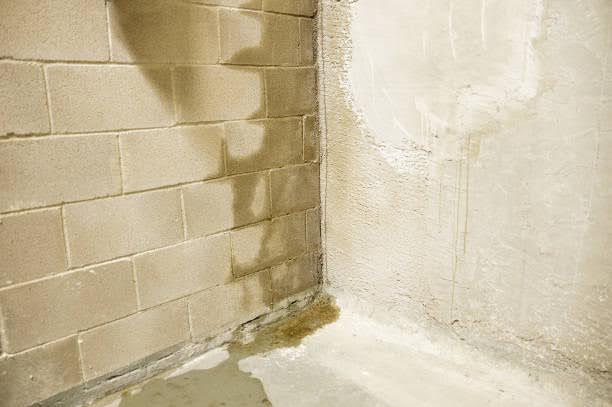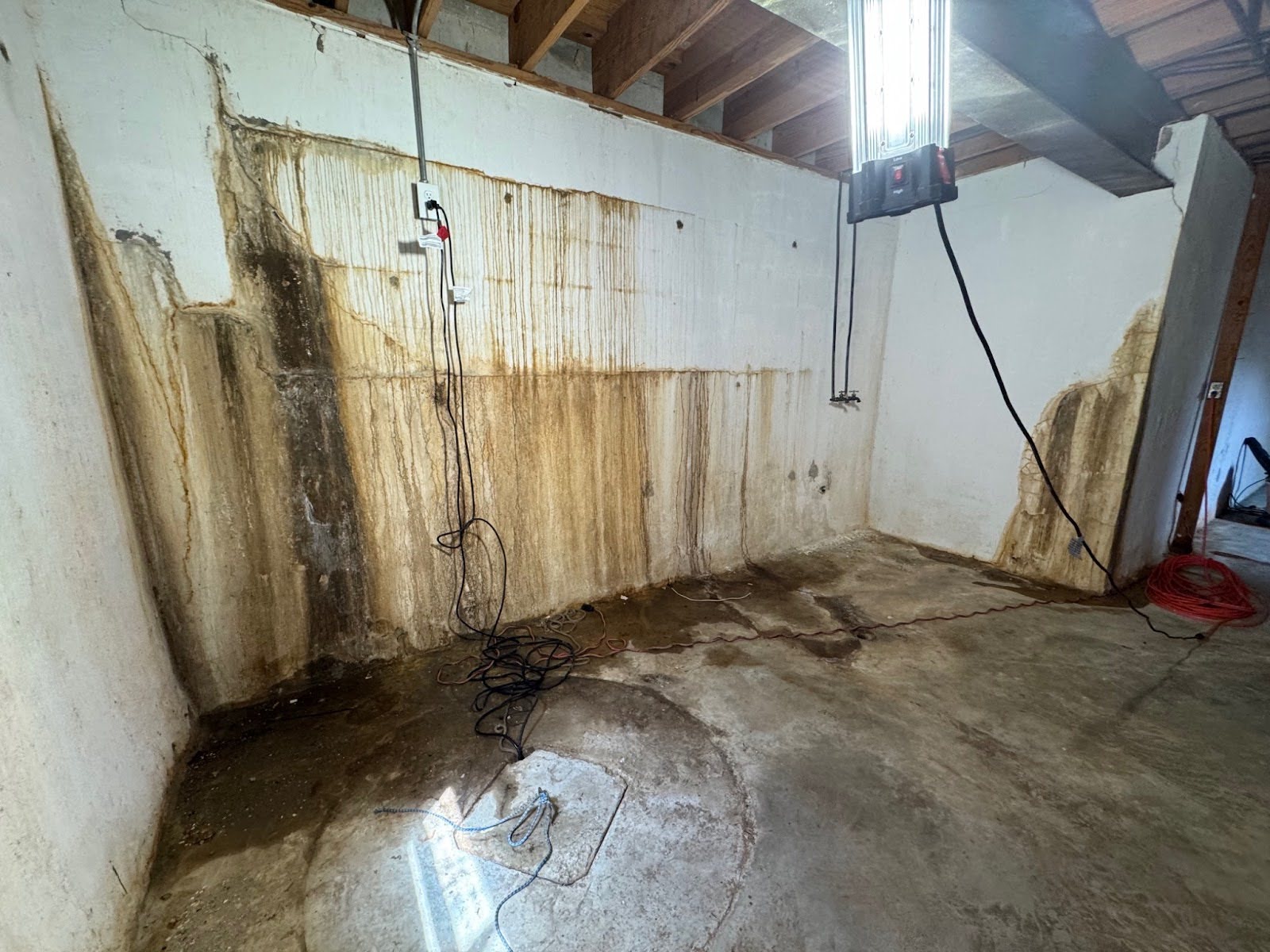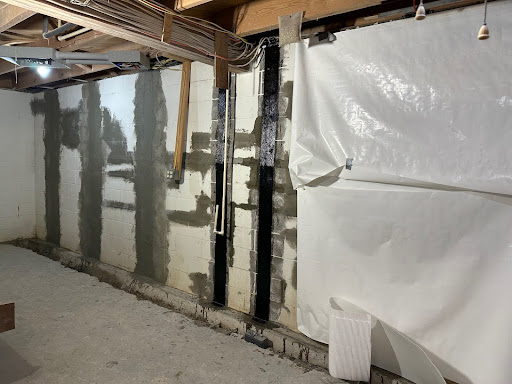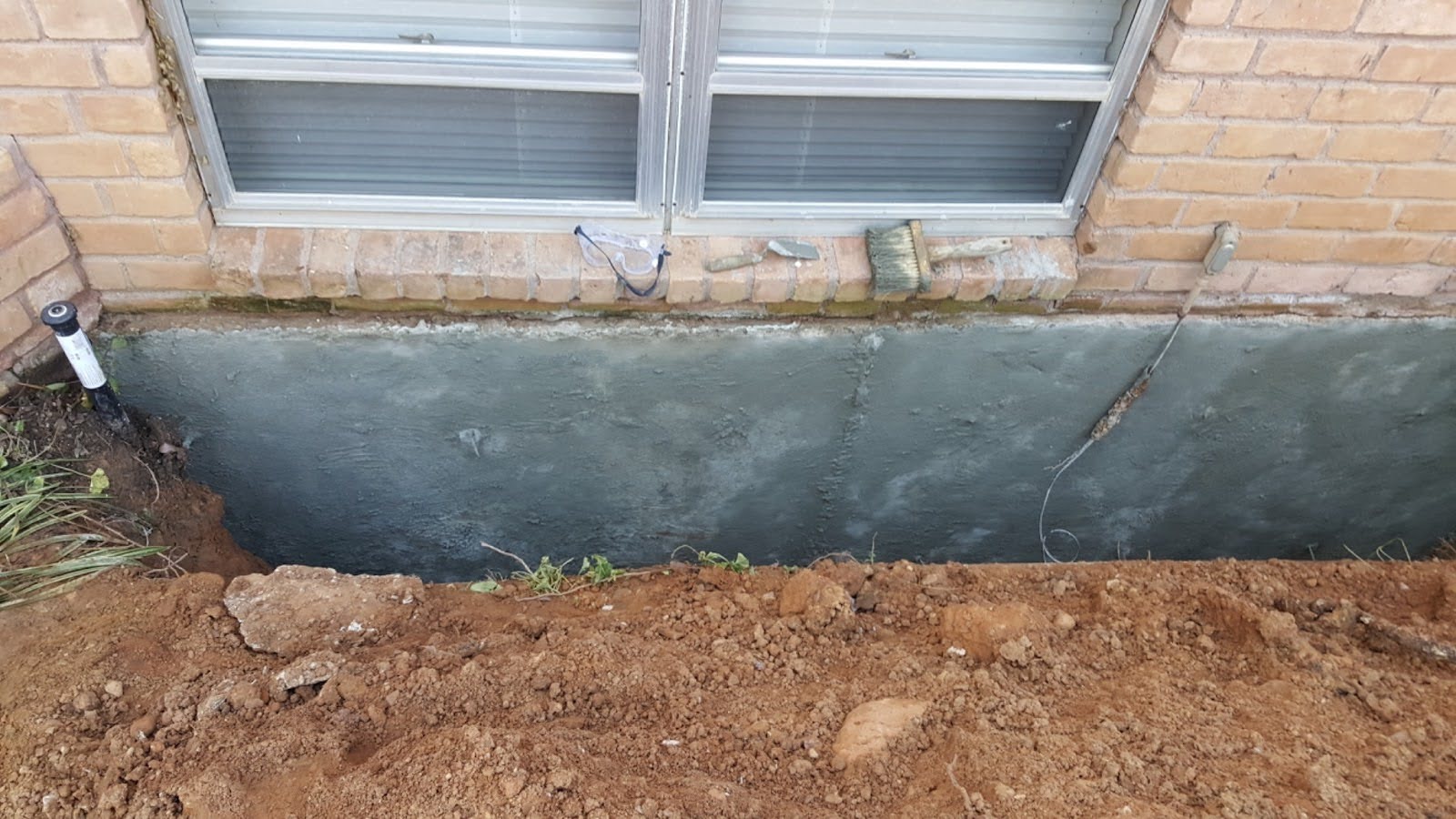- May 11, 2024
- Posted by:
- Category: New Innovations

How Can You Effectively Repair and Prevent Basement Leaks? Explore Solutions and Tips!
Basement leaks are more than just a maintenance task. They can pose a threat to your home’s structure and indoor air quality. If left untreated, these leaks can cause significant damage and health issues. This comprehensive guide will provide homeowners with the knowledge and strategies needed to effectively deal with basement leaks.
We will cover everything you need to know about basement leaks:
Understanding the causes of basement leaks
1.Identifying signs of water damage
2.Implementing preventive measures
3.Exploring DIY repair options
4.Knowing when to call in professionals
Whether you have a small dampness issue or are dealing with major water seepage, our guide will offer practical tips to help you address the problem.
For professional assistance with basement leak repair, The Basement Kings are here to help. With their extensive experience and commitment to delivering top-notch service, they ensure that your basement stays dry and protected from future leaks.
Pro Tip: As you navigate through the complexities of waterproofing and repairs, consider obtaining a Custom Property Report from The Basement Kings. These reports offer tailored advice for your specific situation, supporting informed decisions on how best to protect your home from water damage.
Let’s begin this journey together as we explore effective ways to keep basements dry and secure, no matter what challenges arise.
Understanding what is Basement Leaks
Basement leaks are a common issue that homeowners face, and understanding the types and causes is essential for effective management and repair. The types of basement leaks can generally be categorized by their source:
What are Types of Basement Leaks
Wall Leaks: These occur when water penetrates through cracks or porous materials in the basement walls.
1.Floor Leaks: Caused by water seeping up through the floor, often due to
2. hydrostatic pressure beneath the basement.
3. Window Well Leaks: When window wells are improperly drained or sealed, they can allow water to gather and seep into the basement through windows.
| Type of Leak | Common Causes | Typical Signs | Preventive Measures |
|---|---|---|---|
| Wall Leaks | Water penetrates through cracks or porous materials in basement walls. | Visible cracks, dampness on walls, peeling paint or wallpaper. | Seal cracks with appropriate fillers, apply waterproofing paint, and ensure external drainage is functional. |
| Floor Leaks | Water seeping up through the floor due to hydrostatic pressure beneath the basement | Wet spots on the floor, efflorescence, or increased humidity. | Install interior drainage systems like a French drain, use a sump pump, and ensure proper grading outside the house. |
| Window Well Leakss | Improper drainage or sealing of window wells, allowing water to gather and seep through windows. | Water stains around window frames, pooling water in the window well during rain. | Ensure window wells are properly sealed and have functioning drains that redirect water away from the foundation. |
What are The Causes of Basement Leaks
The causes of these leaks are varied, but some of the most prevalent include:
Hydrostatic Pressure: This occurs when groundwater accumulates around the foundation, creating pressure that forces water through cracks and joints into the basement.
1.Poor Sealing: Inadequate sealing around pipes, windows, and foundational walls can grant water easy access to your basement interior.
2.Plumbing Issues: Leaky pipes, failing water heaters, or damaged hoses from appliances like washing machines can also contribute to unwanted moisture.
| Cause | Description | Potential Remedies |
|---|---|---|
| Hydrostatic Pressure | Occurs when groundwater accumulates around the foundation, creating pressure that forces water through cracks and joints into the basement. | - Install interior drainage systems - Use sump pumps |
| Poor Sealing | Inadequate sealing around pipes, windows, and foundational walls can grant water easy access to your basement interior. | - Re-seal windows and pipes - Waterproof external walls |
| Plumbing Issues | Leaky pipes, failing water heaters, or damaged hoses from appliances like washing machines can contribute to unwanted moisture. | - Repair or replace faulty plumbing - Regular inspections |
Addressing each type of leak typically requires a unique approach. For instance, enhancing air quality within the basement using air treatment products can help manage moisture levels and mitigate mold growth associated with minor leaks. On the other hand, more significant structural issues might necessitate an engineering solution to address hydrostatic pressure or foundational weaknesses contributing to severe leakage.
Identifying the type and cause of a basement leak is pivotal for choosing the right repair strategy. With this understanding, homeowners can take informed steps toward a dry and healthy basement environment.
Identifying and Assessing the Extent of Basement Leaks

Detecting and accurately pinpointing the source of basement leaks is crucial for implementing the right repair strategies. Homeowners can adopt several methods to uncover the origins of water intrusion.
What are the Methods for Source Identification:
- Moisture Meters: These devices are indispensable in measuring the moisture content in basement walls and floors. A high reading typically indicates a nearby source of water leakage.
- Visual Inspections: A thorough examination of the basement can reveal cracks, water stains, and areas where water may be seeping through. Special attention should be given to wall-floor joints, window wells, and around pipes that penetrate the foundation.
For those seeking comprehensive knowledge on effective leak detection and repair strategies, exploring resources such as The Basement Kings’ Learning Centre can be invaluable.
What are the Common Signs of Leaks:
- Efflorescence: The presence of white, powdery mineral deposits on basement walls suggests water evaporation from the masonry.
- Mold Growth: Black or green spots on organic materials like wood or drywall indicate prolonged dampness conducive to mold proliferation.
- Musty Odors: A persistent earthy or musty smell often accompanies hidden mold growth due to moisture issues.
Those intrigued by pioneering approaches to basement construction might find Willie E. King Jr.’s insights quite enlightening, as he authored what’s considered the first book ever written on how to build a basement.
By recognizing these signs early, homeowners can take swift action to address leaks before they escalate into more significant problems. Identifying the extent of leaks not only informs repair tactics but also helps in formulating prevention measures for future protection against water damage.
What are the Impact of Basement Leaks on Your Home
Basement leaks don’t just look bad; they can cause serious problems for you and your home. It’s important to understand these risks so that you can take action and prevent any further damage.
Health Risks Associated with Basement Moisture:
Here are some of the health issues that can arise from having a damp basement:
- Respiratory Issues: The moisture in your basement creates the perfect conditions for mold and mildew to grow. Breathing in these substances can lead to respiratory problems, allergies, and even asthma.
- Toxic Mold Exposure: Certain types of mold produce toxins that can be harmful if inhaled or ingested. Being exposed to these toxins for a long time can result in serious health complications.
- Compromised Indoor Air Quality: When there’s moisture coming from your basement, it increases the humidity levels inside your home. This can make it uncomfortable to live in and also lead to potential health issues.
If you’re worried about keeping your basement dry to avoid these risks, you can find helpful information on Keeping a Basement Dry provided by industry experts. This resource offers valuable insights into the causes of basement moisture and effective solutions to keep your basement dry.
Structural Damage from Basement Leaks:
In addition to health concerns, basement leaks can also cause damage to the structure of your home:
- Foundation Weakening: When water seeps into your foundation walls, it puts pressure on them. Over time, this can cause cracks and weaken the overall stability of your home.
- Material Deterioration: If certain parts of your home, like wood or concrete, are constantly exposed to water, they can start to break down. This will eventually require expensive repairs.
- Reduced Property Value: Ignoring basement leaks will only lead to more damage, which could lower the value of your home if you ever decide to sell it.
If you want to dig deeper into these issues, you can explore our collection of informative Books & White Papers written by industry experts. These resources provide comprehensive insights into the perils of neglecting basement waterproofing and understanding structural damage.
By taking care of basement leaks as soon as possible, you’ll be creating a safer living environment for yourself and your family. Plus, you’ll be protecting the overall structure of your home. With the right information and guidance, homeowners can effectively manage the risks associated with basement moisture.
For an in-depth understanding of the causes and solutions of basement moisture, you can refer to this insightful article on Moisture in Basements: Causes and Solutions provided by experts in the field.
Preventing Basement Leaks

Basement leaks can be avoided with strategic and consistent measures. Proactive maintenance and waterproofing steps are essential to keep your basement dry and safe.
1. Landscaping: Proper landscaping, such as slope grading that directs water away from your home or implementing effective exterior drainage systems, can help mitigate the risk of water accumulation around your foundation. Here’s what you can do:
- Check for low spots in your yard where water could pool near your home.
- Consider landscaping solutions like creating a slope or installing a French drain to redirect water.
2. Grading: Incorrectly graded properties may allow water to pool against the foundation wall, eventually leading to leaks. Take these steps to evaluate and adjust the grading around your home:
- Evaluate the grading around your home.
- Make necessary adjustments so that the ground slopes away from your foundation.
3. Guttering and Downspouts: Maintaining your guttering and downspouts is crucial to prevent basement leaks. Follow these maintenance tips:
- Clean gutters regularly.
- Install gutter guards to prevent blockage.
- Use downspout extensions to guide water away from the foundation.
4. Interior Maintenance: Proactive maintenance doesn’t stop at the outer limits of your home. Within the basement, ensure all potential sources of leaks such as pipes and window seals are in good condition. Regular inspections can help you catch minor issues before they escalate into major problems.
While these preventive measures can significantly reduce the risk of basement leaks, they may not entirely eliminate them, especially in areas prone to heavy rainfall or high groundwater levels. In such cases, it might be necessary to consider waterproofing measures. Various products like BCSM33 provided by Basement Kings Construction offer effective waterproofing solutions for different types of basements.
Exterior Waterproofing Solutions

When it comes to exterior waterproofing, it’s important to know that there’s more to it than just basic precautions. It requires a comprehensive approach to safeguard your basement from potential water damage. And among the different methods available, French Drains are considered one of the best solutions.
Understanding French Drains
A French Drain is an effective solution for preventing basement leaks. It acts as a concealed gutter system, guiding water away from the foundation of your home. This type of drainage system is installed underground around your house, serving as a barrier against hydrostatic pressure – one of the main causes of basement leaks.
How to Install a French Drain
Here are the steps involved in installing a French Drain:
1.Dig trenches along the perimeter of your home.
2.Fill the bottom of these trenches with gravel.
3.Place perforated pipes on top of the gravel layer.
4.Cover the pipes with more gravel, making sure they’re secure.
5.Finally, fill the trenches with soil or restore any landscaping features.
Once in place, French Drains work continuously to redirect water away from your home’s foundation. This significantly lowers the chances of water seepage into your basement, effectively protecting both its structure and indoor environment.
The Importance of Professional Help
While it’s possible to install a French Drain yourself, getting professional assistance is highly recommended for optimal results. Experts in exterior waterproofing can provide valuable insights and ensure that the job is done right.
If you’re considering this option, Basement Kings offers specialized services including high-quality French Drain installation that can help you achieve a dry and leak-free basement.
Accomplishing successful exterior waterproofing requires careful planning and execution. For this reason, many homeowners choose to work with professionals who specialize in these types of projects.
Next, we’ll explore interior waterproofing techniques in more detail and discuss how they complement exterior methods. Using both approaches together offers the highest level of protection against different sources of water damage – because every precaution matters when it comes to keeping your basement dry.
But before moving on, let’s briefly touch upon the concept of a basement assessment. Understanding this process can help you better protect your basement and make informed decisions, such as purchasing basement insurance.
Interior Waterproofing Techniques
1. The Role of Proper Landscaping, Grading, and Gutter Maintenance
Effective interior waterproofing often starts outside. Here are some key steps you can take to prevent water from seeping into your basement:
- Ensure that the soil around your home slopes away from the foundation. This will help redirect water away from your basement.
- Keep your gutters clean and free of debris to prevent them from overflowing. This can lead to water seeping into the ground along the foundation.
- Use downspout extensions to carry water from your roof as far away from the house as possible.
For comprehensive landscaping designs that complement waterproofing efforts, consider consulting with reliable basement design consultants who can provide expert guidance on how to optimize your exterior drainage system.
2. Installing a Drainage System and Sump Pump
Inside the basement, installing a robust drainage system is paramount for managing water ingress. A properly designed system channels water efficiently to a sump pump, which then expels it safely away from the home’s foundation. Here are key components to consider:
- Drainage Channels: These are installed at the perimeter of the basement floor to intercept water entering through walls or up through the floor.
- Sump Pit: The lowest point in a basement where water naturally collects; a well-constructed sump pit is essential for effective pumping.
- Sump Pump: It’s the heart of any interior waterproofing system. A reliable sump pump ensures collected water is moved out of your basement promptly.
For added protection during severe weather events or in flood-prone areas, augmenting your waterproofing strategy with storm shelters can be a wise investment for safety and peace of mind.
By integrating these techniques, you can significantly bolster your home’s defense against moisture intrusion. And remember, regular inspection and maintenance of both indoor and outdoor components are vital for long-term dryness and comfort in your basement space.
Repairing and Sealing Basement Leaks
When it comes to fixing basement leaks, it’s important to understand the value of getting help from professionals, especially in complicated cases. While you might be able to handle small leaks on your own, bigger or more complex issues require the expertise and tools that only specialists have.
Why You Need Professional Help:
- Expert Diagnosis: Professionals use advanced methods to accurately identify the main cause of basement leaks.
- Proper Repair Techniques: From using hydraulic cement for non-structural cracks to epoxy injections for structural ones, professionals determine the best approach.
- High-Quality Materials: They have access to industrial-grade sealants and waterproofing products that are not usually sold to the general public.
- Warranty Coverage: Many professional repairs come with warranties, giving homeowners peace of mind and protection.
Examples of Professional Leak Repairs:
- Epoxy and Polyurethane Injections: Great for sealing small cracks in poured concrete walls.
- Interior Drainage Systems: Installation of systems like WaterGuard® ensures proper channeling of water to a sump pump.
- Carbon Fiber Straps: Used when cracks indicate bowing walls, providing long-term stabilization.
Professionals look at the situation as a whole, taking into account things like hydrostatic pressure and soil conditions around the foundation. With their help, homeowners can be confident that the repairs being done are not just quick fixes but solutions designed to keep their homes structurally sound and free from water damage.
Conclusion
Ensuring a dry and leak-free basement is crucial for the structural health of your home and the well-being of its occupants. Basement leak repair is not only about fixing an existing problem; it’s also about making changes that will protect your space from future issues. By following the prevention tips provided, homeowners can significantly reduce the risk of basement leaks.
Taking proactive measures, such as regularly inspecting, properly landscaping, and maintaining gutters and downspouts, can play a key role in keeping basements dry. Remember that investing a little time and effort in preventive care can save you from expensive repairs later on. If you do come across any signs of water seepage, dealing with it promptly will prevent further damage and preserve the quality of your living area.
For complete protection:
Regularly inspect for signs of moisture or leaks.
Maintain your home’s exterior to prevent water buildup.
Consider installing a reliable waterproofing system.
When dealing with complex basement problems, it’s important to seek professional help from certified technicians who can provide a lasting solution tailored to your home’s specific requirements. Keep in mind that a dry basement is more than just a matter of comfort; it’s essential for preserving your home in the long run.
Frequently Asked Questions
What are the common causes of basement leaks?
Common causes of basement leaks include hydrostatic pressure, poor sealing, and plumbing issues.
How can I identify the sources of basement leaks?
You can identify the sources of basement leaks through methods such as using moisture meters, visual inspections, and looking for signs like efflorescence, mold growth, and musty odors.
What are the potential health risks associated with prolonged exposure to basement moisture?
Prolonged exposure to basement moisture can lead to potential health risks such as respiratory issues and allergies due to mold growth and poor air quality.
What are some proactive maintenance and waterproofing measures for preventing basement leaks?
Proactive maintenance and waterproofing measures for preventing basement leaks include proper landscaping, grading, gutter maintenance, and exterior waterproofing solutions like French Drains.
What are some interior waterproofing techniques for preventing basement leaks?
Interior waterproofing techniques for preventing basement leaks include installing a drainage system and sump pump, in addition to proper landscaping, grading, and gutter maintenance.
Why is professional assistance important for complex basement leak repairs?
Professional assistance is important for complex basement leak repairs because they require specialized knowledge and equipment to ensure effective and long-lasting solutions.
